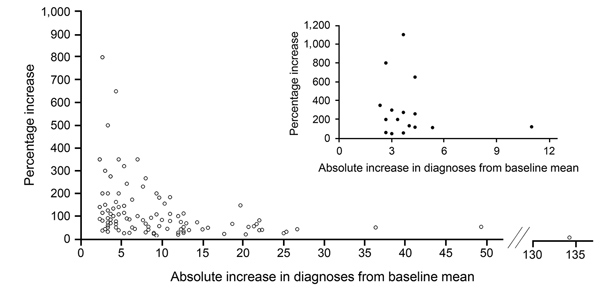Volume 25, Number 5—May 2019
Dispatch
Novel Method for Rapid Detection of Spatiotemporal HIV Clusters Potentially Warranting Intervention
Figure 2

Figure 2. Percentage and absolute increases in annual HIV diagnoses above 3-year baseline means used in method for identifying spatiotemporal clusters of HIV diagnoses. Alerts are shown for 138 counties, as well as 21 county alerts attributable to injection drug use (inset). Five county alerts with 0 baseline diagnoses not shown (infinite percentage increase).
Page created: April 17, 2019
Page updated: April 17, 2019
Page reviewed: April 17, 2019
The conclusions, findings, and opinions expressed by authors contributing to this journal do not necessarily reflect the official position of the U.S. Department of Health and Human Services, the Public Health Service, the Centers for Disease Control and Prevention, or the authors' affiliated institutions. Use of trade names is for identification only and does not imply endorsement by any of the groups named above.